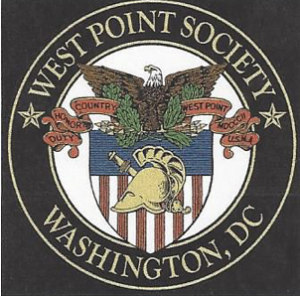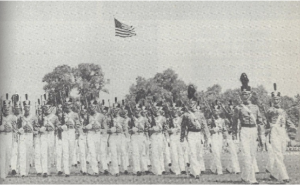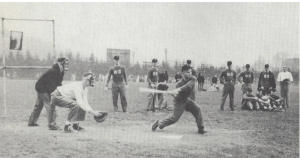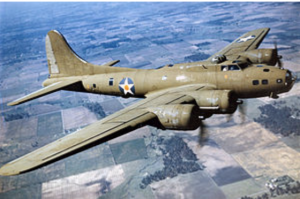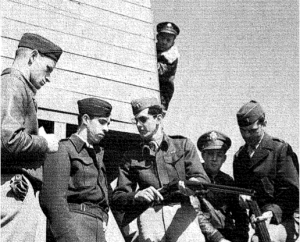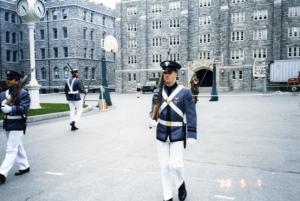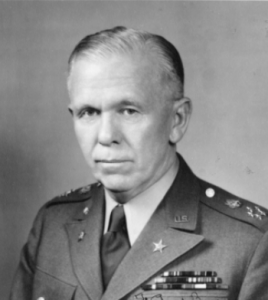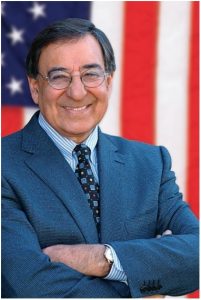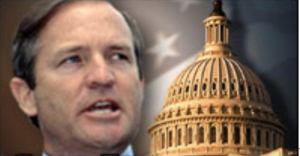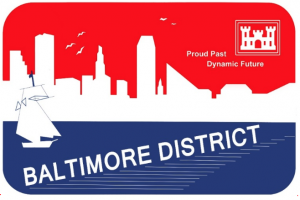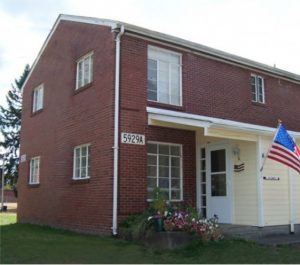by Geoff Prosch
It was my honor to serve on President George W. Bush’s team 2001-2009 as Principal Deputy and Acting Assistant Secretary of the Army (Installations and Environment). The first two years were special because A-Man (BG ret Tom White ’67, creator of the A-Man Rabble Rouser*) was Secretary of the Army.
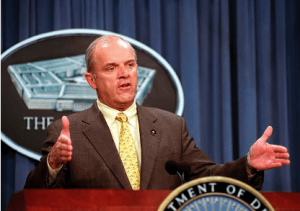
Good leaders have a certain aura about them that is infectious and exciting. People like to be around them. Tom White is one of those great leaders. During his watch, when we walked into the Pentagon every morning, we had a “bounce in our step” knowing we were working for A-Man. This is the same A-Man who wrestled with the Penn State’s mascot Nittany Lion under the Poop Deck** during a Football Game Mess Hall dinner rally, kicked the lion’s ass, and dragged him off stage by the tail.
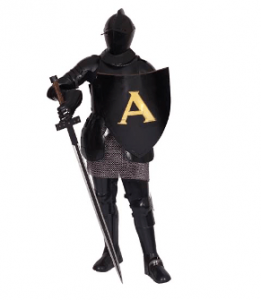
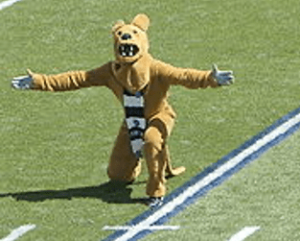
Tom White “tangled” with SECDEF Rumsfeld frequently because he always told the “Emperor when he was not wearing any clothes”. Tom White ultimately was fired by the SECDEF for challenging Rumsfeld’s failure to plan for post-invasion law and order in Iraq. White backed Chief of Staff of the Army Ric Shinseki (USMA ’65), when Shinseki accurately predicted that limiting the size of the US Iraq invasion force would be a strategic failure. History proved White and Shinseki right and SECDEF Rumsfeld flat wrong.
My office was on the 2d Floor E-Ring of the Pentagon overlooking Arlington National Cemetery. When the first plane hit the Twin Tower, I turned on my office TV. I watched as the second plane hit the other Twin Tower. We all then knew it was a terrorist attack on the homeland.
When the plane hit the Pentagon one corridor down the hall, I was jolted in my chair. A fireball came down the E-Ring that sounded like a locomotive going by. It was followed by thick smoke which eventually forced us to vacate the building. I walked out the River Entrance across the South Parking Lot to the Doubletree Hotel—up to the top floor revolving restaurant—and watched the Pentagon burn. People were crying watching the TV as they saw fathers and mothers leap off the building to avoid burning to death. They opened the bar. I felt like I had been kicked in the stomach.
About an hour later, I was hit by a guilt attack. It became clear that I did not belong at the Doubletree Hotel. I talked my way through the Arlington Police and Building Security and re-entered the burning Pentagon at the Mall Entrance heading for the Army Operations Center—through smoke and dust-filled corridors.
The Mall Entrance is located approximately in the middle of the Pentagon’s Marshall Corridor on the E-Ring 2d Floor. George Marshall in my opinion was our greatest Soldier/Statesman of the 20th century. Just across from the Secretary of the Army’s office is a small alcove dedicated to Marshall’s half-century of service. Sitting prominently in the middle of the alcove is a life size bust of Marshall, sculpted by Nison A. Tregor*** in 1943.
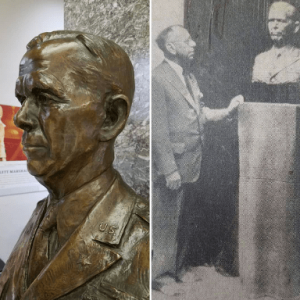
As I passed by, I caught a glimpse of the bust, shrouded in smoke, Marshall’s face gazed back at me resolutely as if to say, “Stay Strong, this too shall pass”. Strengthened, I moved on.
When I entered the Army Ops Center, Tom White was conducting a headcount and addressing the troops. We determined that the Army G1, LTG Tim Maude, had been killed in his office situated directly above the impact of the plane. Tom White’s remarks were forceful and calming. He gave us confidence that we would attack this threat and win. Everyone broke into a spontaneous rousing chorus of “God Bless America”.
The Pentagon Building Operations Center (BOCC) was critical to the success of containing the fire. The BOCC was able to report to SECDEF the status of the fire and cause the Pentagon to not be fully evacuated. Most of the other Federal buildings in DC and the White House were fully evacuated after the Pentagon was hit. The Pentagon remained operational. The BOCC was able to identify the location of severed water lines and provide “work-around” solutions to the Arlington Fire Department. The BOCC was able to adjust atmospheric pressure at the site of the attack to purge smoke from the building. This particular building operations center was installed by Johnson Controls, Inc. a year prior to the attack to save energy. It ultimately saved lives.
I’ve never forgotten these very inspiring moments on that very dark day in American history. The Pentagon roof burned for 3 more days. The Pentagon civilian workforce all reported for duty the next morning after the attack….no way could you call this Pentagon government work force “Rear Echelon”.
The day after the attack, the Army Corps of Engineers began the renovation planning. The renovation work crew had 3 shifts and worked 24 hours a day, 7 days a week. When you drove by the Pentagon late at night during the renovation, the roof was lit up and workers looked like ants crawling around. President Bush cut the ribbon on the renovated Pentagon wedge one year after the attack—September 11th, 2002.
* West Point cheerleaders (called “rabble rousers”) added the character A-Man to their team with a cadet dressed in a cape patterned after Batman.
** According to Bugle Notes (the cadet Bible for important information), the poop-deck is the balcony in the dining hall from which orders are published to the Corp of Cadets. On rare occasions, the poop-deck is used in a different way. For example, at the time of the famous Duty, Honor Country speech by General Douglas MacArthur, Mrs. MacArthur, Mrs. Westmoreland and other ladies in their party were served their lunch on and listened to the speech from the poop deck. In cadet parlance, “poop” is defined as information to be memorized.
*** Sculptor Nison Tregor, a naturalized citizen from Lithuania, enlisted in the U.S. Army Medical Corps in 1943, working first at Walter Reed Hospital in Washington, D.C. where he helped plastic surgeons by reconstructing in clay the faces of soldiers shattered in the war. Later, because of his fluency in German, Russian, Polish, Serbian and Czech as well as experience with sculpture, Tregor was moved to the MFAA (Monuments, Fine Arts and Archives) of the U.S. 12th Army Group in Europe. He was one of the “Monuments Men”, helping to catalog and preserve the great art of Europe.
